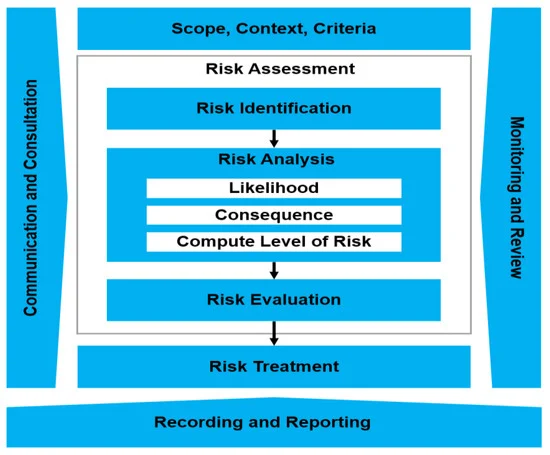As DORA compliance becomes mandatory, many financial institutions are reassessing their cyber insurance coverage. This guide explains how cyber insurance relates to DORA and what you should consider.
Cyber Insurance in the DORA Context
What DORA Says About Insurance
DORA doesn't mandate cyber insurance, but it:
- Allows entities to use insurance as a risk mitigation tool
- Requires disclosure of insurance coverage in ICT risk assessments
- Expects entities to understand limitations of coverage
- Emphasizes that insurance doesn't replace operational controls
Insurance as Part of Risk Strategy
Cyber insurance should be viewed as:
- Risk Transfer: Financial protection for residual risks
- Not a Substitute: Cannot replace required security controls
- Complementary: Part of comprehensive risk management
- Conditional: Coverage depends on maintaining security measures
How DORA Affects Insurance Requirements
Insurers Demanding DORA Compliance
Insurance companies are now:
- Requiring evidence of DORA compliance for coverage
- Adjusting premiums based on compliance status
- Including DORA-specific questions in applications
- Conducting more thorough security assessments
- Excluding non-compliant entities from coverage
Application Process Changes
Expect insurers to request:
- ICT risk management framework documentation
- Incident history and response capabilities
- Third-party risk management processes
- Evidence of security testing
- Business continuity and disaster recovery plans
- Security certifications and audit reports
Types of Coverage
First-Party Coverage
Protects the insured organization for:
- Business Interruption: Lost income due to cyber incidents
- Data Recovery: Costs to restore systems and data
- Extortion Payments: Ransomware and cyber extortion
- Crisis Management: PR, legal, and notification costs
- Forensic Investigation: Incident analysis and remediation
Third-Party Coverage
Protects against claims from:
- Regulatory Fines: DORA penalties (where insurable)
- Privacy Violations: GDPR and data protection claims
- Network Security Liability: Claims from security failures
- Professional Services: Errors in financial services
Key Policy Considerations
Coverage Limits
Assess appropriate limits based on:
- Potential business interruption losses
- Cost of major incident response
- Regulatory penalty exposure
- Third-party liability exposure
- Ransomware payment scenarios
Exclusions to Watch
Common exclusions include:
- Acts of war and terrorism (increasingly relevant)
- Known vulnerabilities not remediated
- Lack of basic security controls
- Intentional acts by insured
- Betterment costs (improvements beyond restoration)
- Certain regulatory fines
Deductibles and Sub-Limits
Understand:
- Waiting periods for business interruption
- Deductible amounts and when they apply
- Sub-limits on specific coverages
- Aggregate vs. per-occurrence limits
DORA Incident Reporting and Claims
Coordination Requirements
When incidents occur:
- DORA reporting to authorities takes precedence
- Insurer notification timelines must be met
- Coordinate messaging between regulator and insurer
- Maintain privilege for legal communications
Claims Documentation
For successful claims, maintain:
- Detailed incident timeline
- Evidence of compliance with policy conditions
- Quantification of losses
- Response and remediation costs
- Third-party invoices and receipts
Premium Implications of DORA
Factors Affecting Pricing
Insurers consider:
- Compliance Status: Full DORA compliance vs. gaps
- Security Maturity: Quality of controls and testing
- Incident History: Past incidents and response effectiveness
- Industry Sector: Risk profile of financial services provided
- Size and Complexity: Organization scale and interconnections
- Third-Party Dependencies: Cloud and vendor risk management
Reducing Premiums
Demonstrate to insurers:
- Robust DORA compliance program
- Strong security culture and awareness
- Effective incident response capabilities
- Regular testing and validation
- Mature third-party risk management
- Industry certifications and standards
Regulatory Penalties and Insurance
Insurability of DORA Fines
Important considerations:
- Many jurisdictions prohibit insuring regulatory fines
- Coverage for defense costs may be available
- Civil penalties may have different rules than criminal fines
- Policy terms vary by insurer and jurisdiction
- Consult legal advisors on specific situations
Alternative Risk Transfer
Beyond traditional insurance:
- Captive insurance arrangements
- Risk pools with industry peers
- Parametric insurance for specific scenarios
- Self-insurance for certain risks
Selecting the Right Coverage
Risk Assessment Process
- Identify Risks: Map DORA risks to insurance coverage
- Quantify Impact: Estimate potential financial losses
- Determine Risk Appetite: What level of loss can you absorb?
- Assess Coverage Options: Compare policies and terms
- Cost-Benefit Analysis: Premium vs. protection value
Policy Comparison Checklist
- Coverage limits and sub-limits
- Deductibles and waiting periods
- Exclusions and limitations
- Incident response services included
- Claims process and support
- Financial stability of insurer
- Experience with financial institutions
- Understanding of DORA requirements
Working with Brokers and Insurers
Choosing a Broker
Select brokers with:
- Experience in financial services sector
- Understanding of DORA requirements
- Access to multiple insurance markets
- Claims advocacy track record
Application Process
Be prepared to provide:
- Comprehensive security questionnaires
- ICT risk management documentation
- Historical incident data
- Third-party risk assessments
- Testing and audit reports
- Business continuity plans
Integration with DORA Framework
Insurance in Risk Register
Document in your ICT risk framework:
- Which risks are covered by insurance
- Coverage limits and gaps
- Policy renewal dates
- Insurance as mitigation vs. residual risk acceptance
Testing Insurance Procedures
Include in resilience testing:
- Incident notification to insurer
- Claims documentation processes
- Coordination with incident response
- Access to insurer-provided resources
Future Trends
Market Evolution
Expect to see:
- Increasing premiums for non-compliant entities
- More detailed compliance verification
- Narrower coverage terms
- Greater emphasis on prevention
- Cyber insurance as competitive differentiator
Innovative Products
- Parametric coverage for specific DORA scenarios
- Bundled compliance and insurance services
- Continuous monitoring-based pricing
- Industry-specific coverage tailored to DORA
Key Takeaways
- Cyber insurance complements but doesn't replace DORA controls
- DORA compliance increasingly required for coverage
- Understand policy terms, exclusions, and limitations
- Document insurance in your ICT risk framework
- Work with experienced brokers and insurers
- Regularly review coverage as risks evolve
- Consider insurance as part of holistic risk strategy
